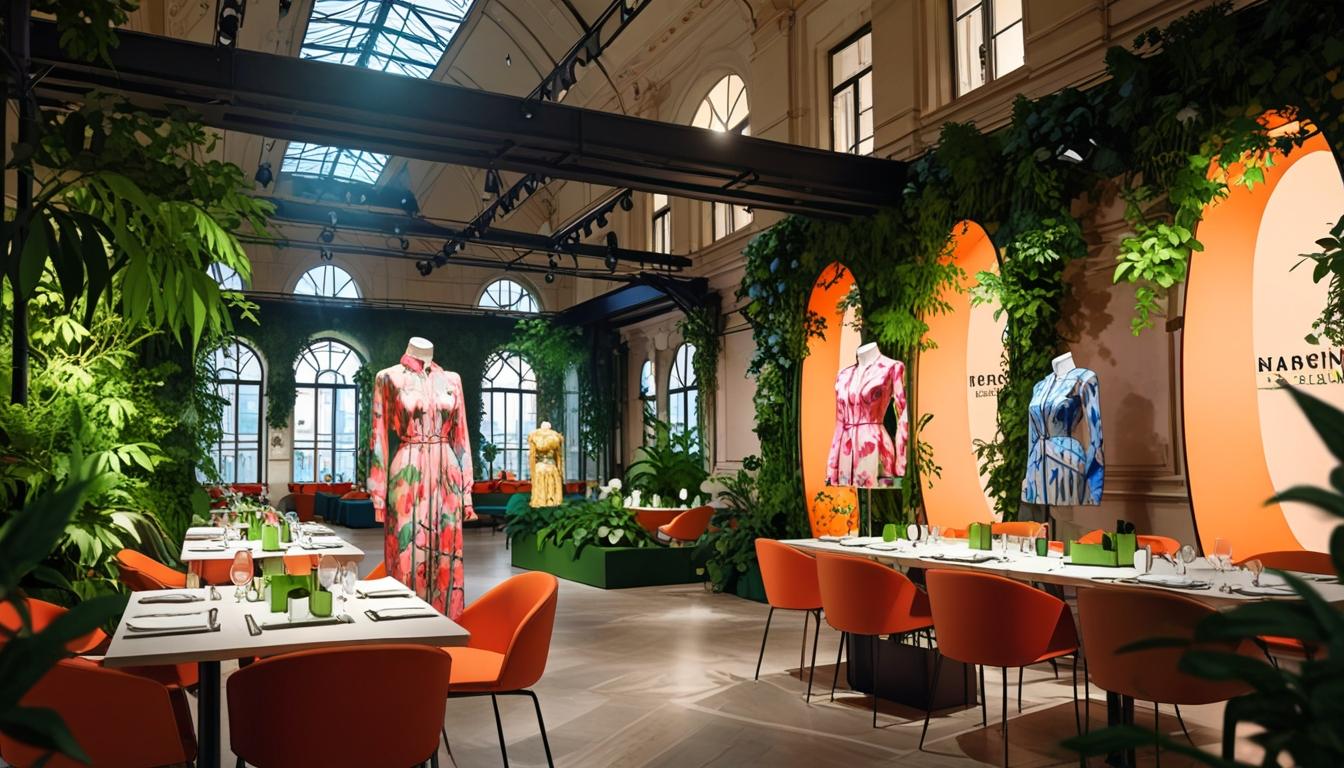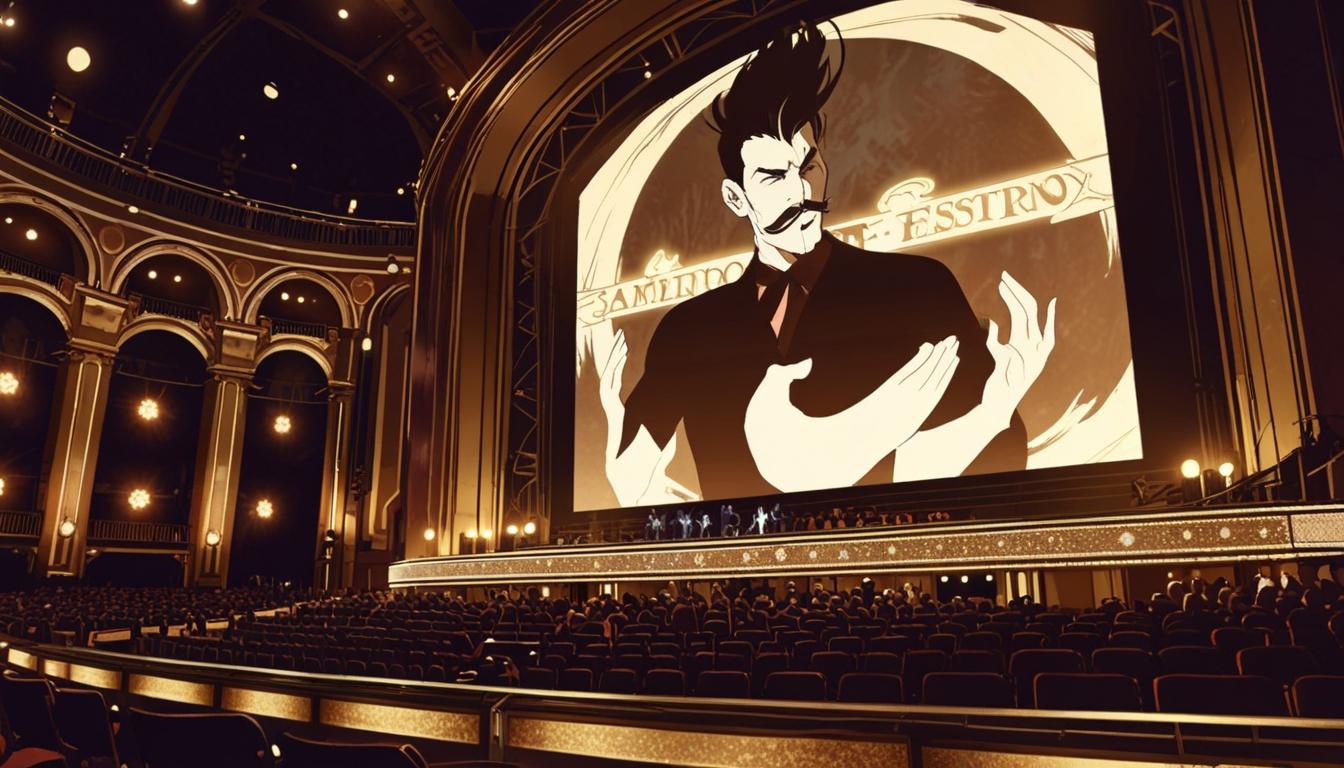Late 1950s fashion trends ushered in a revitalizing shift toward relaxed styles, emphasizing comfort and self-expression. Women embraced sack dresses and A-line shapes, while hemlines began to rise, paving the way for the miniskirt. For men, fitted jackets replaced stiff suits, reflecting a more laid-back look. Youth culture blossomed, with subcultures like Teddy Boys and Beatniks defining new styles, such as draped jackets and black turtlenecks. Icons like Elvis Presley influenced these trends, as casual wear became a popular means of personal expression. You'll discover even more about this vibrant era and its impact on today's fashion scene.
Overview of Late 1950s Fashion
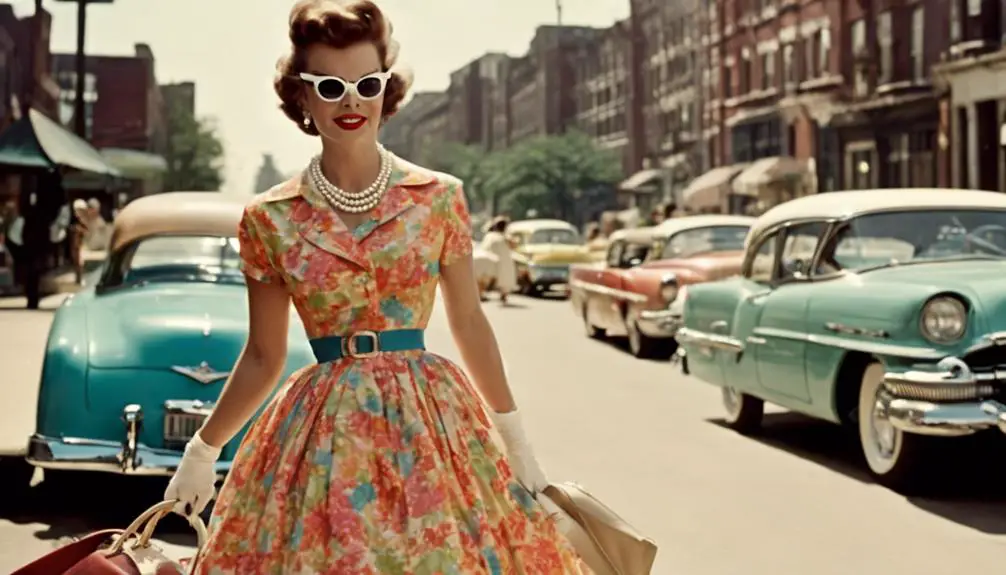
As fashion evolved in the late 1950s, you'd notice a distinct shift towards more relaxed silhouettes that offered both comfort and style. Gone were the days of tightly-fitted dresses; instead, sack dresses and loose blouses took center stage, allowing for easier movement and a more casual vibe. This change reflected broader societal shifts, particularly influenced by the emergence of youth culture.
Chanel played a key role during this period, introducing short jackets adorned with brass buttons that complemented the new, relaxed styles. While vibrant colors remained popular, there was also a growing appreciation for neutral tones that conveyed sophistication without being overly flashy.
Men's fashion underwent its own transformation, embracing Continental-style suits that featured fitted jackets and bold patterned blazers. Leisure clothing, like khaki slacks, became fashionable, emphasizing comfort alongside style.
Distinct youth subcultures emerged, each with their own fashion statements. The Teddy Boys, with their Edwardian-inspired looks, contrasted sharply with the Beatniks, who favored a minimalist aesthetic marked by simple black clothing and berets.
These styles not only showcased individuality but also highlighted the generational divide in fashion preferences.
Key Women's Fashion Trends
The late 1950s marked a significant turning point in women's fashion, embracing relaxed silhouettes that prioritized comfort without sacrificing style. As you explore this era, you'll notice the rise of sack dresses and A-line shapes that allowed for greater ease of movement. These designs weren't only practical but also chic, setting the stage for a more comfortable approach to women's clothing.
The influence of iconic brands, such as Burberry, is evident during this time as they began to evolve their styles to meet changing tastes and preferences, which aligns with their commitment to quality materials and craftsmanship vintage clothing identification.
Around 1958, hemlines began to rise, paving the way for the daring miniskirt. This bold shift reflected a newfound confidence in women's fashion, encouraging you to express yourself in more adventurous ways. For evening wear, opulent designs emerged, showcasing wide necklines and often paired with stylish bolero jackets, adding sophistication to your evenings out.
During the day, tailored blouses and classic pencil skirts became staples in women's wardrobes, providing a polished look that was both fashionable and functional. The introduction of synthetic fabrics played an essential role, allowing for innovative designs in vibrant colors, making outfits pop in both casual and formal settings.
Influential designers like Chanel and Givenchy shaped this fashion landscape, emphasizing elegance and sophistication in their collections. Their work inspired countless women to embrace these trends, proving that fashion could be both beautiful and comfortable.
As you immerse yourself in the key women's fashion trends of the late 1950s, you'll find a perfect blend of style and ease that continues to influence fashion today.
Men's Fashion Evolution
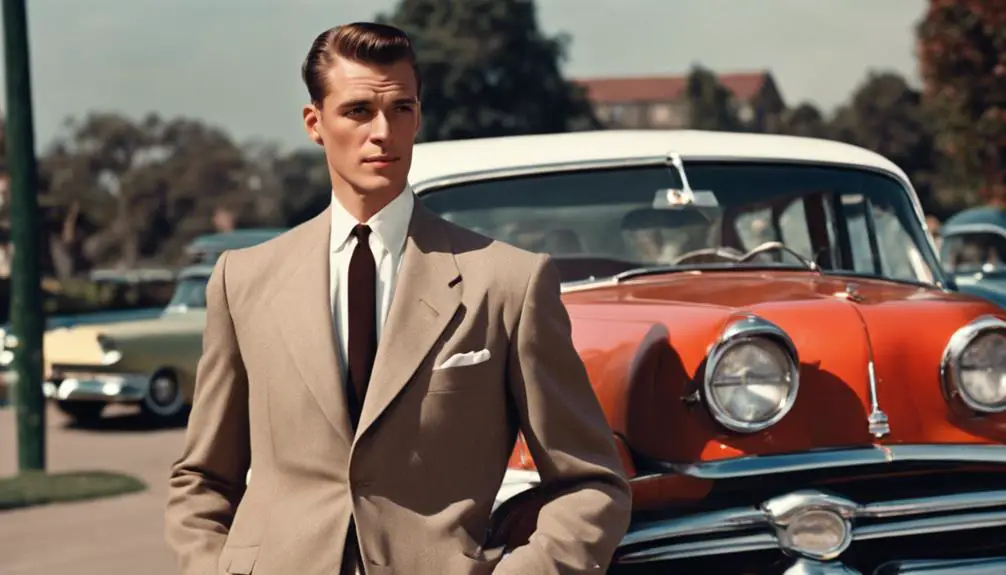
While exploring the late 1950s, you'll notice a notable evolution in men's fashion, characterized by a shift toward relaxed silhouettes and more comfortable fits. Gone are the days of stiff, structured three-piece suits; instead, fitted jackets with lighter fabrics emerged, allowing men to feel more at ease.
The Continental style took center stage, showcasing narrower lapels and shorter jackets. This trend emphasized a tailored yet comfortable fit, perfect for the modern man who appreciated both style and comfort. In this period, brands like Ralph Lauren began to influence fashion with their commitment to quality and timeless designs, contributing to the overall aesthetic of the era vintage item characteristics.
Casual attire also gained popularity during this era. Hawaiian shirts, brightly colored sports coats, and Bermuda shorts became staples of leisure wear, enabling men to embrace a more relaxed lifestyle without sacrificing fashion.
Knitwear, such as cardigans and pullovers, became essential for layering, offering versatility for both casual outings and semi-formal occasions.
Accessories played a significant role in this evolution, too. Narrow ties and bold patterned socks allowed men to express their personalities in ways that were previously understated. This newfound freedom in accessorizing mirrored a broader cultural shift toward individuality and self-expression.
As you explore these trends, you'll see how late 1950s men's fashion laid the groundwork for contemporary styles. The combination of relaxed silhouettes, eye-catching casual attire, and thoughtful accessories made it an exciting time for men's fashion, reflecting a more expressive and dynamic approach to style that still resonates today.
Youth and Teen Styles
Men's fashion in the late 1950s set the stage for a vibrant youth culture that embraced its own unique styles. Youth fashion became increasingly distinct, with teenage boys diving into the Teddy Boy style. This look featured draped jackets, narrow ties, and tight trousers, all reflecting a retro-Edwardian influence.
The evolution of branding and logos during this period, particularly in companies like LL Bean, played a role in shaping the cultural context of fashion, as seen in the vintage logo identification. Meanwhile, girls were turning heads in fitted blouses paired with circle skirts, especially the iconic poodle skirts adorned with playful designs, marking a fun departure from their mothers' more formal styles.
The rise of rock 'n' roll culture brought more excitement to youth fashion. Male icons like Marlon Brando and Elvis Presley popularized leather jackets and jeans, symbolizing rebellion and youthful defiance. These outfits became staples for many teenage boys wanting to capture that edgy vibe.
Accessories played a significant role too—girls accessorized with bobby socks and saddle shoes, while boys sported slicked-back hairstyles or pompadours to complete their looks.
The Beatnik style also emerged during this time, appealing to those drawn to a more bohemian aesthetic. Black turtlenecks, berets, and simple dark clothing became symbols of this counterculture movement.
It was a stark contrast to the flashy styles of rock 'n' roll, yet equally influential.
Cultural Influences on Fashion
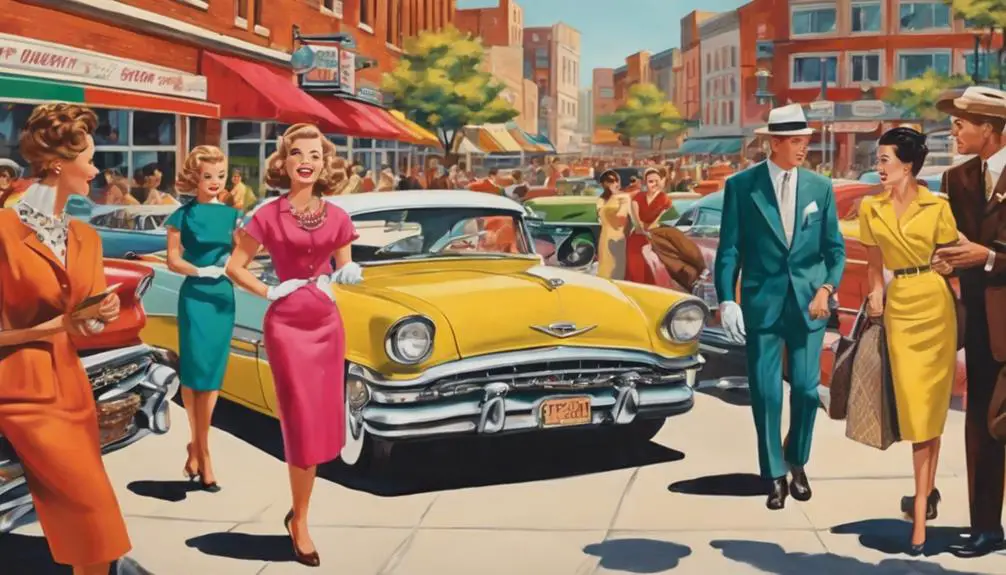
Cultural influences in the late 1950s transformed fashion into a vibrant expression of identity and rebellion. As youth culture surged, rock 'n' roll icons like Elvis Presley led the charge, popularizing casual fashion trends that embraced denim, leather jackets, and rebellious styles. This era also saw the rise of athletic brands like Adidas, which began to establish a foothold in popular culture, creating products that resonated with the youth's desire for comfort and style the iconic 3-Stripes logo.
You could see this shift reflected in the wardrobes of teenagers who wanted to break away from traditional norms.
Here are three key influences that shaped fashion during this era:
- Film and Television: Movies like *Rebel Without a Cause* and *Grease* presented characters whose styles became templates for youth fashion. The iconic looks of James Dean and John Travolta inspired teens to adopt similar rebellious aesthetics.
- The Beat Generation: This literary movement introduced a more intellectual style, favoring black turtlenecks, berets, and simple dark clothing. It stood in stark contrast to the flashy mainstream trends, promoting individuality over conformity.
- Emergence of Subcultures: Groups like the Teddy Boys showcased Edwardian-inspired fashion, emphasizing a cultural shift towards expressing personal identity and rejecting societal expectations.
Fashion magazines played a significant role in disseminating these styles, fueling consumerism and encouraging young people to explore their individuality.
The late 1950s was a time when casual fashion became a canvas for self-expression, reflecting the rebellious spirit of a generation enthusiastic to carve out its own identity.

